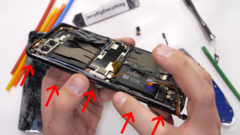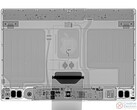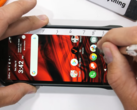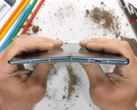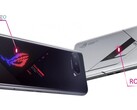It can't have escaped the ardent premium Android phone fan's notice that every OEM has gone all kinds of in with the thermal management packed into their new Snapdragon 888-powered flagships. Asus' take on this with the recently-launched ROG Phone 5 involved moving its stacked main board from a more normal upper-half location to the midline of the device, something that is accomodated by splitting the battery in half and putting one "pack" on either side of it.
Unfortunately, it seems this adaptation has not helped the new ROG Phone's durability. Its solid gamer looks did not stop it from cracking right in half during Zach Nelson's JerryRigEverything durability test - the complete opposite of the results achieved by its forebears.
Nelson initially suspected that the 5's secondary USB type C port/accessory connector had something to do with the increasingly rare failure, as it lined up neatly with the critical fault; then again, this feature was also present in its predecessor, which managed not to snap like a biscuit during its own episode of the popular YouTube series.
The vlogger proceeded to tear the 5 down in order to get to the bottom of the situation for sure. This revealed the gaming device's new dual battery and segmented motherboard, which, as they all lie parallel to the top of the chassis, might have contributed to its fragility. Indeed, Nelson now argues that, thanks to the pandemic, Asus had not been able to engineer the 5's structure properly at all.
Quite apart from that, the video did not do much for the ROG Phone 5's potential reparability. Despite the fact the back glass was comprehensively shattered, strong glue made it difficult for Nelson to get into the device and showcase the new board/battery set-up.
Furthermore, the central board, replete with a complicated profusion of ribbon cables, appeared to be held down with "the world's smallest hex-bolt", which might call for a tool not found in the average iFixit kit.
Furthermore, should a user want to access the ROG Phone's 5 vapor chamber (dwarfed though it was by that of the Sony Xperia Pro), they would have to remove the 144Hz E4 AMOLED display, thus risking its destruction (when not already broken) in the process.
Finally, Nelson has not addressed the fact that the ROG Phone 5 has, for the first time in its series' history, more expensive variants with rear-facing secondary displays, 18GB of RAM, or both. It would be interesting to see if these Pro and Ultimate versions would be more resistant to bending.




